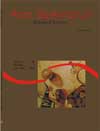<b>Espectro polínico de amostras de mel de <em>Melipona mandacaia</em> Smith, 1863 (Hymenoptera: Apidae)</b> - DOI: 10.4025/actascibiolsci.v28i1.1061
Resumo
O espectro polínico de amostras de mel da abelha Melipona mandacaia foi analisado com objetivo de elucidar os recursos alimentares utilizados por essa espécie. A identificação das plantas visitadas foi realizada com base na análise dos tipos polínicos encontrados nas amostras de mel coletadas em 11 colônias localizadas no município de São Gabriel, em área de caatinga do Estado da Bahia, Brasil (11º14’S e 41º52’W). As análises quantitativas e qualitativas foram realizadas com o objetivo de determinar as porcentagens e classes de freqüência dos tipos polínicos presentes nas amostras de mel. Foram encontrados 26 tipos polínicos, sendo o tipo Piptadenia rigida (Mimosaceae) considerado dominante. Ricinus communis (Euphorbiaceae), Mimosa verrucata (Mimosaceae) e M. arenosa (Mimosaceae) foram considerados pólen isolado importante. As famílias mais representativas no espectro polínico das amostras de mel foram Mimosaceae, Euphorbiaceae, Asteraceae e AnacardiaceaeDownloads
DECLARAÇÃO DE ORIGINALIDADE E DIREITOS AUTORAIS
Declaro que o presente artigo é original, não tendo sido submetido à publicação em qualquer outro periódico nacional ou internacional, quer seja em parte ou em sua totalidade.
Os direitos autorais pertencem exclusivamente aos autores. Os direitos de licenciamento utilizados pelo periódico é a licença Creative Commons Attribution 4.0 (CC BY 4.0): são permitidos o compartilhamento (cópia e distribuição do material em qualqer meio ou formato) e adaptação (remix, transformação e criação de material a partir do conteúdo assim licenciado para quaisquer fins, inclusive comerciais.
Recomenda-se a leitura desse link para maiores informações sobre o tema: fornecimento de créditos e referências de forma correta, entre outros detalhes cruciais para uso adequado do material licenciado.












1.png)




3.png)













